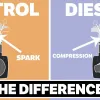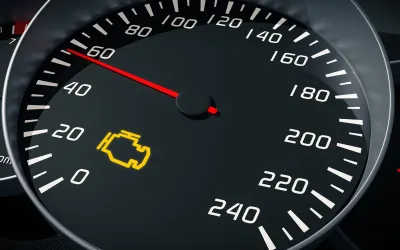The timing belt is such an important part that it should never be neglected. A neglected belt that breaks will cause catastrophic engine damage.
Consequences of breaking the timing belt
- bent valves;
- broken pistons;
- cylinder head hit or even cracked.
The engine generally has 2 very important shafts, the crankshaft or the vibroshaft and the camshaft, some engines being equipped with 2 camshafts.
The drive belt is first actuated by the vibrochem and transmits motion to the camshaft, thus activating the intake and exhaust valves.
In the end, the valves are synchronized with the pistons and the engine runs in accordance with the opening and closing times of the valves.
Basically, the belt is the one that tells the engine what to do, so it is an extremely important part, a jumped distribution will immediately damage the engine and a misplaced or misaligned distribution will make the engine run incorrectly.
Symptoms of a faulty timing belt
The timing belt is made of rubber, which is a natural material and which over time hardens and loses its elastic properties.
Before giving in, the belt may creak or simply break without any sign beforehand.
Ideally, visually inspect the belt once every 60,000 km. You or a mechanic can inspect it when you arrive with the car in service for overhaul.
Most manufacturers recommend changing the timing belt to 100,000 km, although some can withstand up to 160,000 km. It would be safest to check the belt change interval in the car book.
When it comes to breaking the timing belt, pray that your engine is one without interference. There are two types of motors, with and without interference.
In the case of interference engines, the damage will be total. Over 70% of today’s cars are with interference.
State-of-the-art technology also has its disadvantages, because in an interference engine, to reduce space and to make the engine lighter, the valves move inside the cylinder and if a valve remains blocked due to the jump distribution, in less than a the second the piston will hit this valve, which at that moment had to be up in its housing.
At this point the piston cracks, the connecting rods can break the crankcase or oil bath of the car and eventually the engine will be completely destroyed, without the possibility of repairing it.
I said above that you should pray that your engine is one without interference, because in this case, there is a free space between the valves and the pistons.
If the distribution jumps the piston will bend the valve and this valve will hit the cylinder head. In this case you must change the valve or bent valves, the cylinder head must be rectified and one or two pistons changed, but the engine can be rebuilt.
The distribution of the car should not be neglected, so make sure that it is replaced in time and with an original belt, otherwise you have to rebuild an engine or buy a new one.
Therefore, when buying a second-hand car, it is recommended to replace the timing belt immediately, in the case of cars with over 60,000 km.










